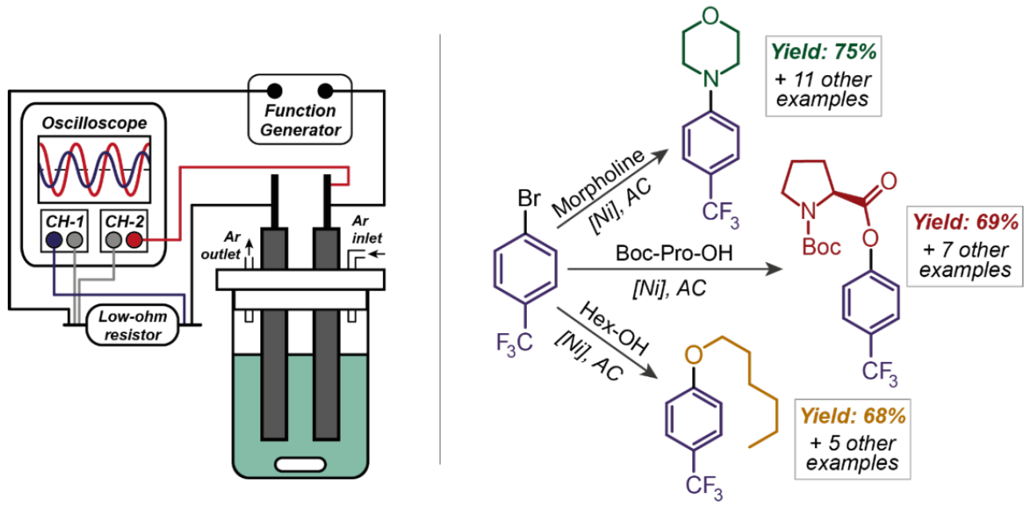18308
Overview
A method for coupling alternating current (AC) electrolysis to transition-metal catalysis, enabling enhanced catalytic reactions with higher yields and selectivity.
Applications
- Catalytic systems where one or several steps can be accelerated by electrochemical oxidation/reduction
- Transition-metal catalytic reactions
Differentiation
- Expanded Potentials beyond the solvent electrochemical window
- Adjustable Selectivity
- Innovative Stirring-free Reactor Design
- Efficient Redox Reactions on the same electrode
- Prevents electrode fouling

Demonstrated setup and AC-enabled Ni-catalyzed cross-coupling reactions
Development Stage
The method is at TRL of 4. It has been used for a variety of catalysis processes, producing different amines, aryl bromides, carboxylic acids and alcohols.
Patent Status:
European Patent Office Published: Publication Number: 4214355
Contact for more information

Dr. Vered Pardo Yissar
Senior Director of Business Development, Exact Sciences

